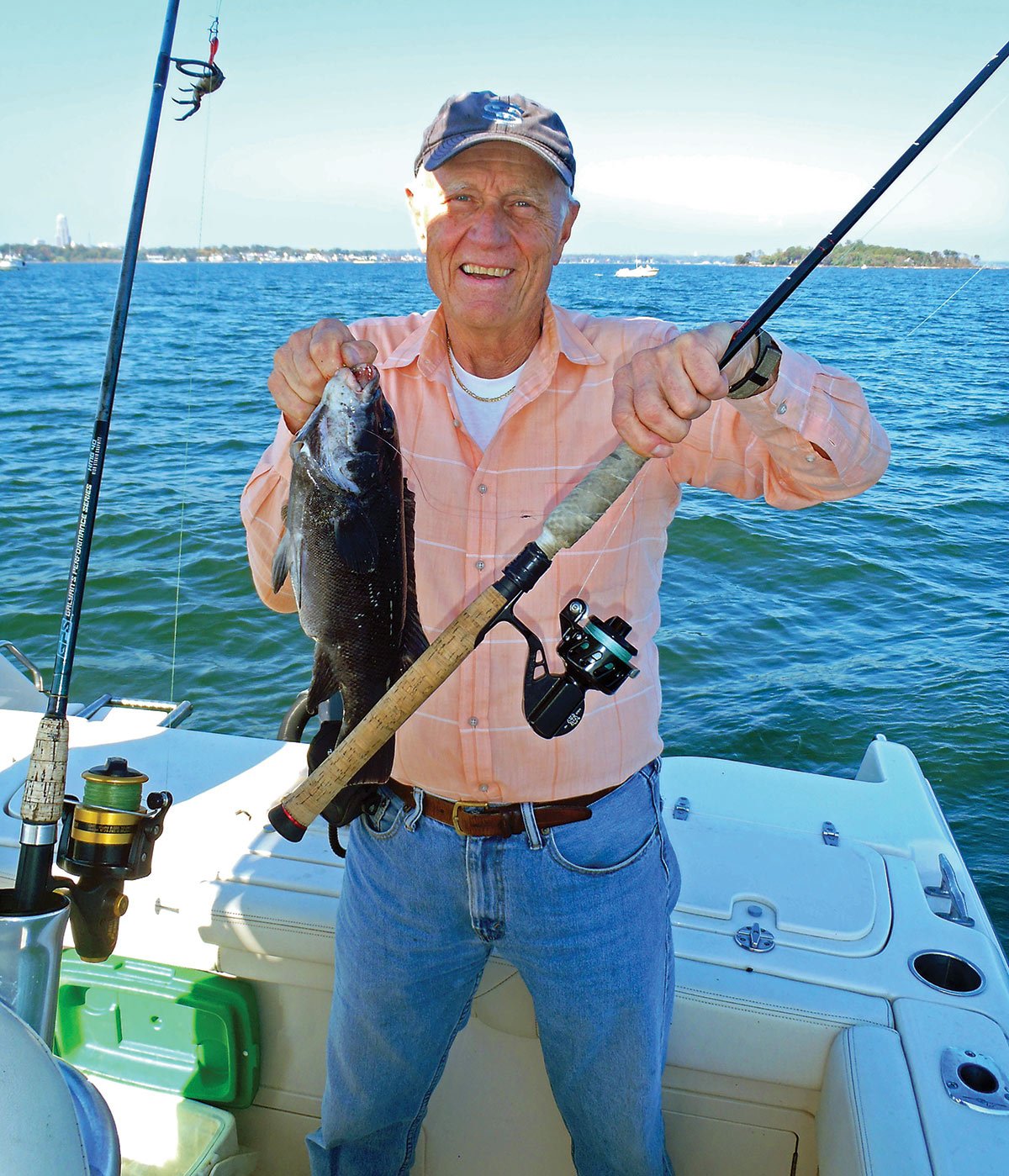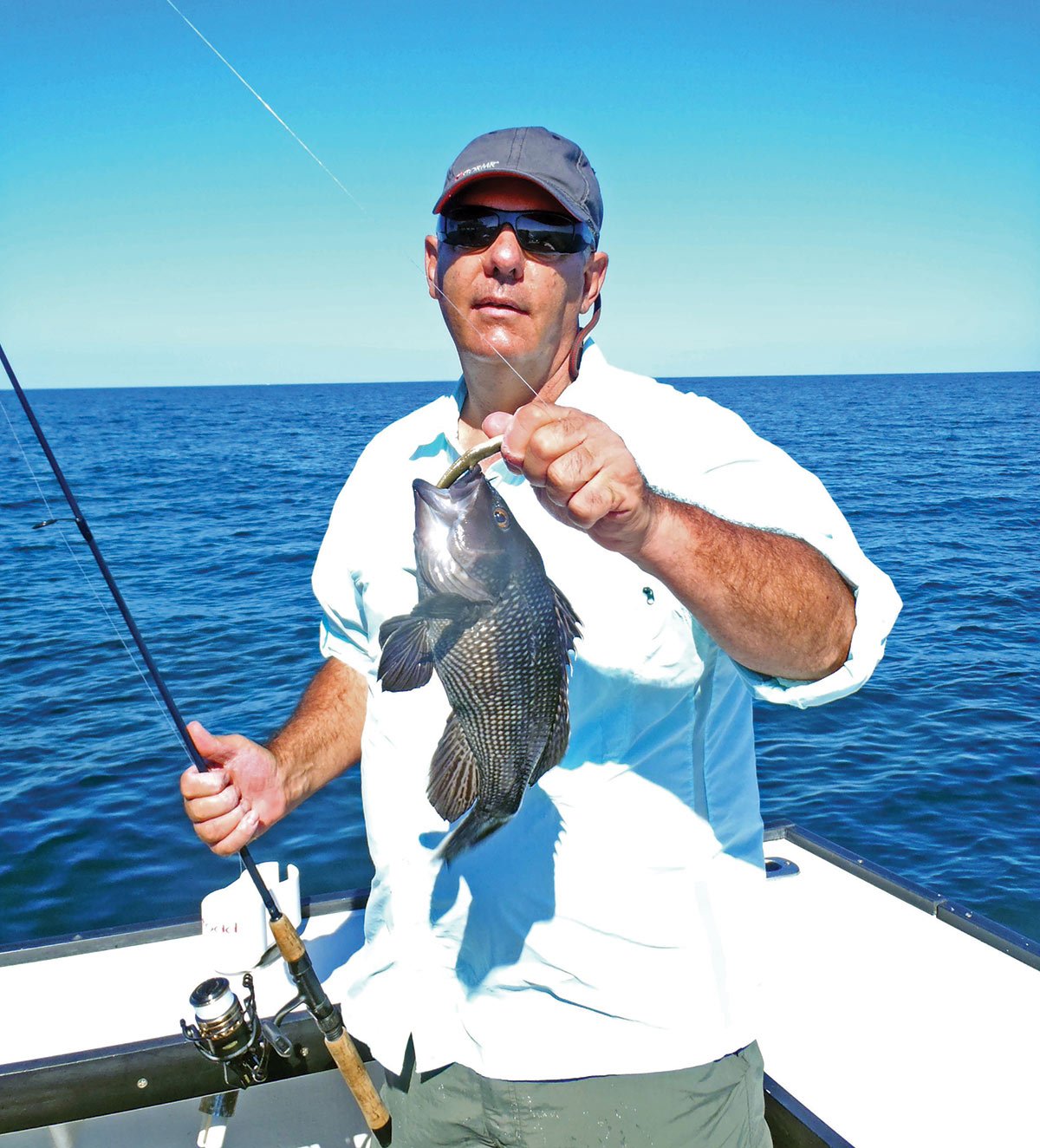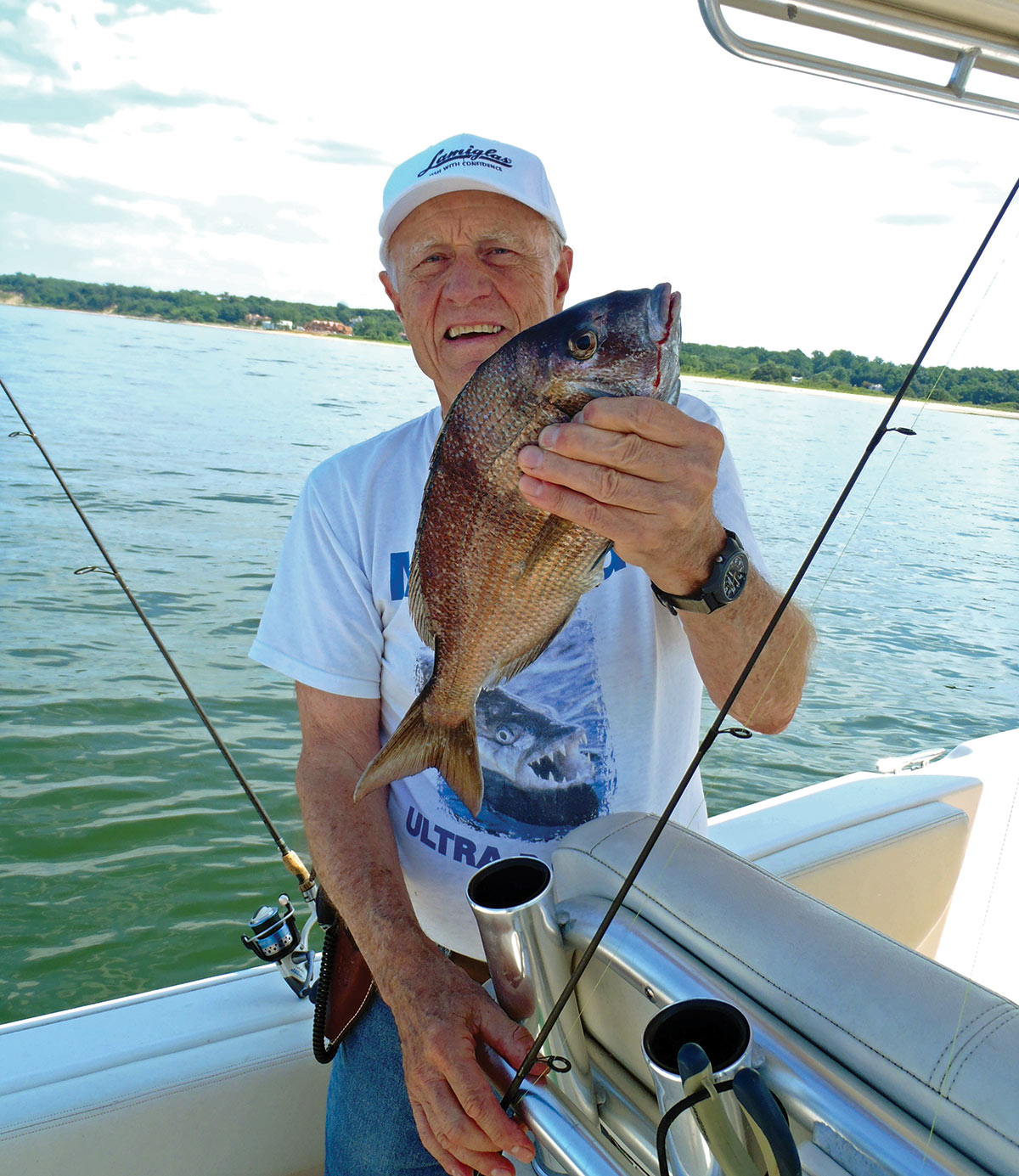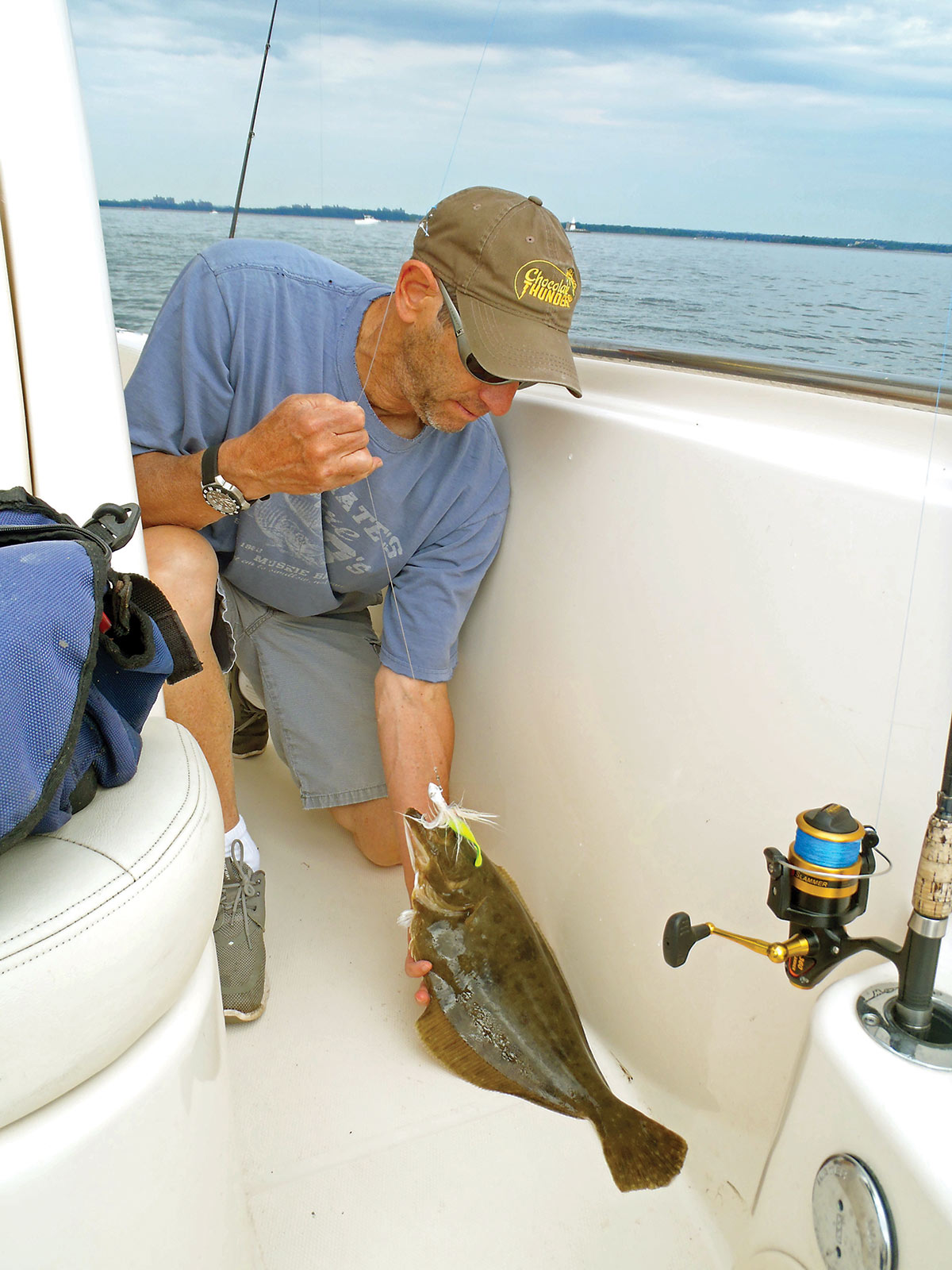Fishing light tackle for bottom species like blackfish, sea bass, fluke and porgies is no longer a fad and it’s time you get with the program.

In the 1980s and ‘90s, when light and ultralight saltwater fishing began a popular trend, many applications were tried but few of these trail blazing attempts survived in the angling arsenal once anglers discovered their limitations. However, technology hasn’t just advanced, it’s rocketed forward. The problems with the original graphite rods have been solved, and better-made rods present anglers with more possibilities and fewer difficulties. Likewise, reels once touted for saltwater use that rusted and broke down quickly have been replaced by serious light tackle winders for saltwater use. Of course, fishing lines also stood in the way of light tackle bottom fishing success. Monofilament stretches, and since one couldn’t and shouldn’t use 30-pound test monofilament line on a small reel, an alternative was needed. The alternative is braided line, but in the early days these lines had troubles, too. They frayed easily, were susceptible to abrasion, knot strength was often poor, there were mysterious unexplained break-offs, and the coatings wore off quickly exposing braided fibers. Once exposed, fraying accelerated, and eventually weakened individual fibers. I dare say, there are more than a few anglers who continue to refuse to try braid because of bad experiences in the early years. But lines have gotten better and better, so that today I use braided lines for all types of fishing. If your only experiences with braid dates back to the twentieth century, try one again.
Species and Rigs
Most bottom fish are suitable for light tackle. I’ve enjoyed light tackle fishing for fluke, porgy, seabass, blackfish, and flounder. Obviously, light tackle and stud-sized blackfish can be a difficult combination only because of how difficult it is to lift them away from the bottom rocks. That said, some very good light tackle fishermen have boated double digit tog on the lightest tackle. Most of us can fish without difficulty for the many small blackfish that have been abundant recently. With an eye toward bottom rocks and crevices, we try to avoid bottoms with structure so rugged that even heavy tackle is defeated by the debris. The best scenario for us has been clusters of larger rocks with either mussel beds or sand and gravel between them.

tackle bottom fishing in deep, fast-moving water.
The recently developed technique of using jigs for blackfish is really catching on, and we believe that light tackle facilitates the technique. We seem to get more hits, the hook up is easier, we snag bottom far less often, along with a bonus that the fish fight better without a sinker hanging off their lips. Friends and I use the lightest jigs we can while remaining in contact with the bottom. In addition, braided line and light tackle allow us to feel even the smallest nibble. Typically, in the shallow water spots, we prefer light tackle along with 3/8-, 1/2-, and 3/4-ounce jig heads. Although orange and green heads are most popular, I haven’t found color to be all that important. I’ve even caught them with jigs that have not been painted. However, there are anglers who prefer a sinker and baited hook approach, but if you insist, use one hook, rather than two-hook rigs in order to minimize hang-ups.
Porgies are a pure delight on light and ultra-light gear. I prefer to use the lightest combos possible since there are so many areas where porgies feed that are virtually free of bottom snags. In fact, I often switch to a freshwater ultra-light outfit in such situations, which consists of a 5-1/2-foot light power rod with a fast action tip, a 250-size reel, and 8-pound test line. I guarantee, should you hook up with a 13- to 16-inch porgy, you will not wrench that fish to the surface, it will take drag, and it will be a memory that will stick with you for some time. As former LIF editor, Scott Simons, used to say, “If porgies got to be 20 pounds, nobody would fish for stripers.”
There is no need to tie your own rigs. Bait and tackle dealers have a wide selection of them in a variety of hook sizes depending upon where and how you fish, as well as whether or not you expect to catch giants. There is no need to discuss seabass since most anglers catch them in the same place and on the same outings, and with the same rigs and bait, although they do show a real affinity for soft plastics, especially scented ones like Gulp.

Many of us enjoy fishing for winter flounder and enjoy eating them, too. As we know, that population has crashed and many anglers no longer fish hard for them. However, if you’re one of the die-hards, the light tackle I’ve described is totally appropriate. Last year, while exploring for porgies in May, I caught a 2-pound flounder on ultralight tackle that took me to the right and then the left side of the boat before it was netted. You’re not going to catch a bucketful, but you will have fun with the few you do catch.
The fluke population, on the other hand, seems to be holding up quite well to fishing pressure. Sure, there are good days and bad days and not every locale holds the same number of fish but when you can, try light tackle. I don’t believe light and ultra-light gear is a good idea in places like the south side of Montauk Point or in the rips, or around wrecks. However, I do most of my fluking in the estuary and these shallow water areas are ideal for light gear. I’ve caught fluke up to 8 pounds without difficulty and the fun factor is off the charts. True, the battle will last longer, larger fluke will run off hither and yon, and they can’t be muscled, but I fish for fun and fluking with light gear is nothing if it isn’t fun!
I use 3/4- to 1-1/2-ounce white bucktails, but try to keep the bucktails as light as I can. Although I generally prefer Spro bucktails, I’ve used other brands successfully, too. I use a piece of Gulp on the hook for a little motion and smell appeal. At one time I believed the sand eel style was best, but the scent is the same for all models, and now I use whatever Gulp I can find. Gulp is tougher than natural baits such as spearing, sand eel, or squid, and I can usually catch a number of fish before it’s ripped to shreds.
Challenges
The species you seek should not determine whether or not you use a light tackle approach, but I believe water depth and movement (drifting) present more significant challenges. Since it isn’t practical to use heavy sinkers with this gear, a fast drift becomes a nightmare very quickly. The heaviest sinkers and or jig heads I’ve used are 2 ounces. At 3 ounces the tips of the rods are pulled down and lose the characteristics needed to fish effectively and enjoy this style of fishing. Depth is an issue because of the time it takes for light weights to reach bottom. However, I watched Fred Golofaro use light tackle in the rips off Montauk and succeed in catching large fluke, porgies and seabass. The technique, however, requires patience and practice so it may not be for everyone. Yet, in shallow water at anchor or during a slow drift, the light tackle technique is easy and lots of fun.
Tackle Suggestions

There are many good choices, and a little Internet research will lead you to durable reliable gear. I haven’t used all brands and models so I can’t rate them, but I know many good rods and reels are out there. What I can do, is tell you about the tackle I use. My first suggestion is put your money in the reel, not the rod for ultra-light fishing. My surf rods are either custom made or produced by top-notch companies like Shimano or St. Croix, because I insist that my rods allow for precise casting, excellent fish fighting ability, and have good balance. But light tackle bottom fishing isn’t serious surf fishing. In fact, here’s how I buy my bottom fishing rods. I visit tackle shops in late summer or fall during clearance sales and I search the rod racks for good rods that are reduced in price. I’m looking for medium action, 6- to 7-foot graphite spinning or baitcasting rods.I lean towards medium action because a big fish requires a little muscle to urge towards the surface. I’ve tried light and medium light power rods and even a smallish porgy or blackfish will cause the rod to buckle into a severe continuous bend. I also favor a fast action tip so I can feel even the most unenergetic bites as well as providing a shock absorber against hard pulls. I’ve found a number of quality rods in the 40- to 60-dollar range that fit the bill.
The Reel’s the Thing
I want quality in the reel because it must stand up to saltwater, have a smooth drag, gears that produce power, and wide spools so that I can retrieve a lot of line with only a few turns. My choice in spinning reels includes mostly Van Staals, and their newest model, the VS 100 is ideal for light tackle fishing, but it comes at a steep price. There are many other reels in the 2500 / 3000 size range by Penn, Tsunami, Daiwa, Abu Garcia, Shimano, Quantum and others that are well suited to this fishing, including many in the $100 range, so choose what is right for your budget.
For those who prefer baitcasting outfits, there are many reels available. Where casting is involved, spinning has its advantages. However, there are times that the ease of lowering a bait and the bottom control offered by a baitcasting reel is a big advantage. In either case, be sure to rinse and maintain your reels to minimize the corrosive effect of saltwater.
Line
Braided lines have come a long way in recent years and I hear very few complaints about any of the brands these days. Between those I fish with, most major brands have received favorable reviews, however the only two brands I’ve used and can comment on are Sufix Performance Braid and Daiwa’s J-Braid. I have no complaints about either one. I use 10-pound test on the 7-foot outfits, and 8-pound test on the 6-foot rigs.There are a few things to remember about braided line in order to get full enjoyment from them. First, do not overfill the spool. Decades ago we filled our reels to the tippy-top with mono in an attempt to get the longest casts possible. However, braid isn’t as thick as mono and is more slippery. As a result, long casts are easily achieved even when we leave a1/8-inch gap between the lip of the spool and the line. By the way, an 1/8-inch is good for our light and ultralight outfits, but I leave almost a 1/4-inch gap with surf gear. Staying behind the lip of the spool will minimize “wind knots” and overruns. Second, although four and five turns are enough when tying an improved clinch knot with mono, you should use eight to 10 turns with braid because it is slippery. A properly tied knot with braid won’t slip when you use 10 turns.
If you haven’t done so already, make this the season you put more fun into your fishing. Lighten up your tackle and be prepared to reap the benefits this tackle can provide. Not only will you have more fun, but you will likely find yourself catching more fish.




